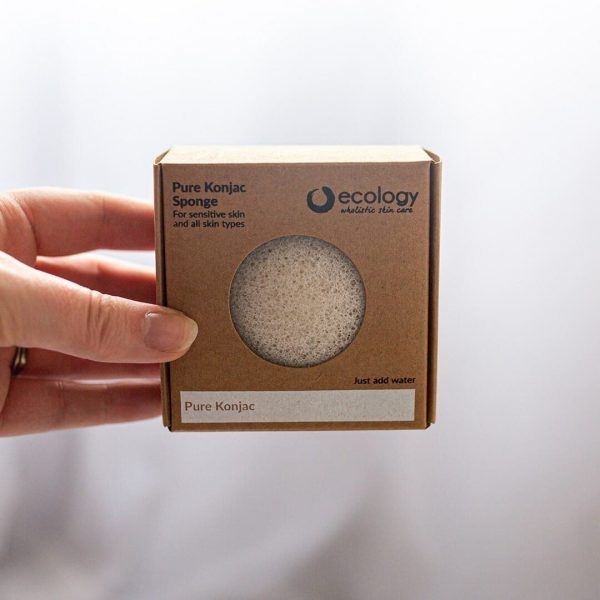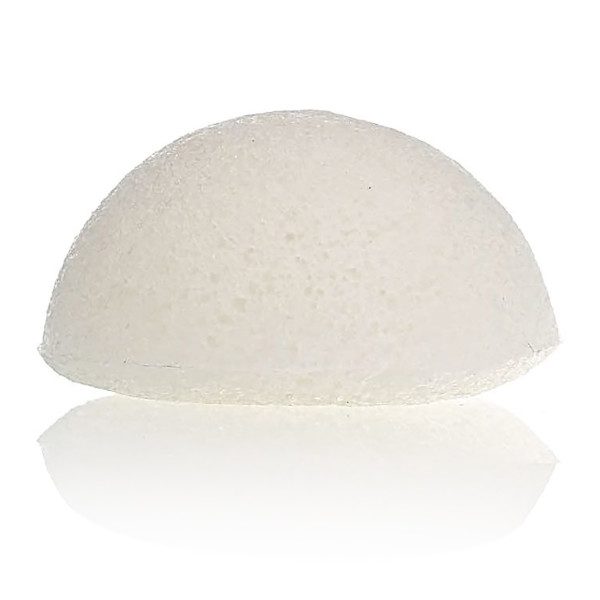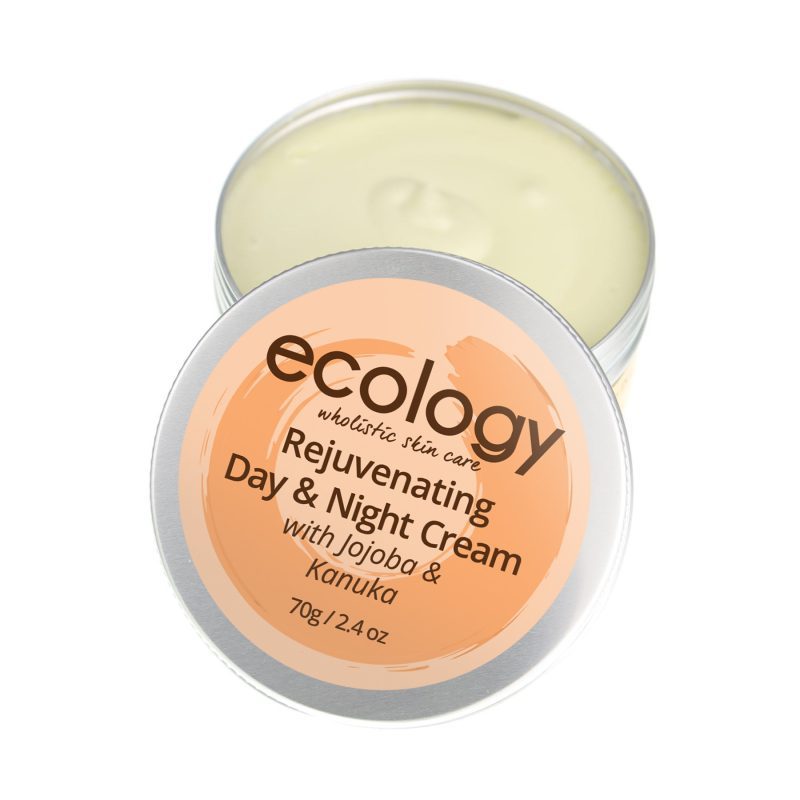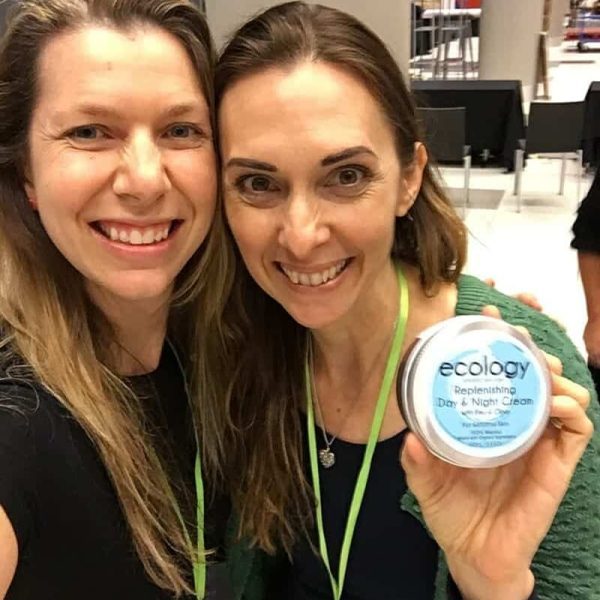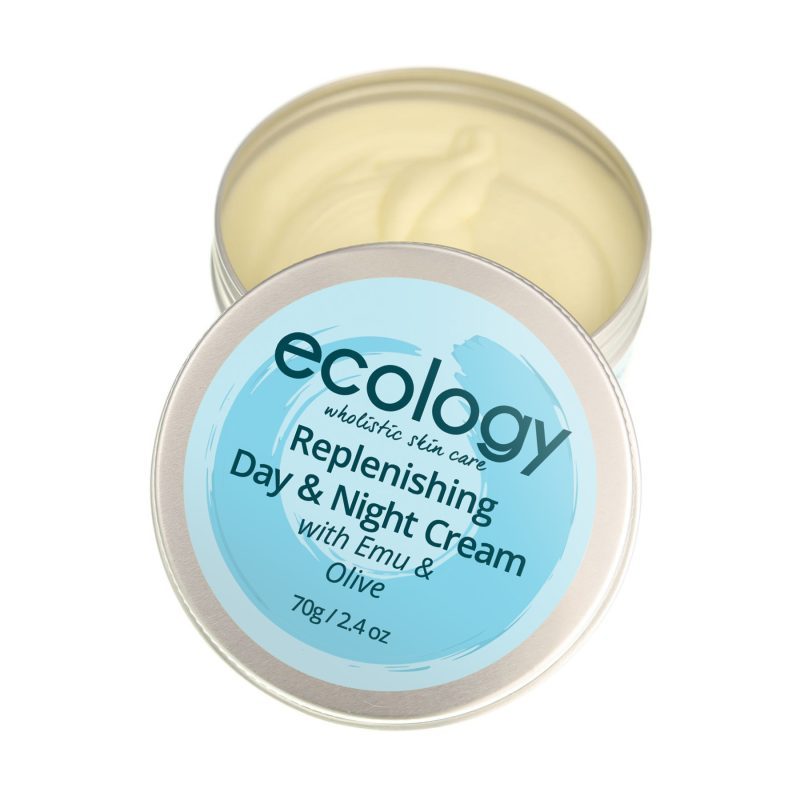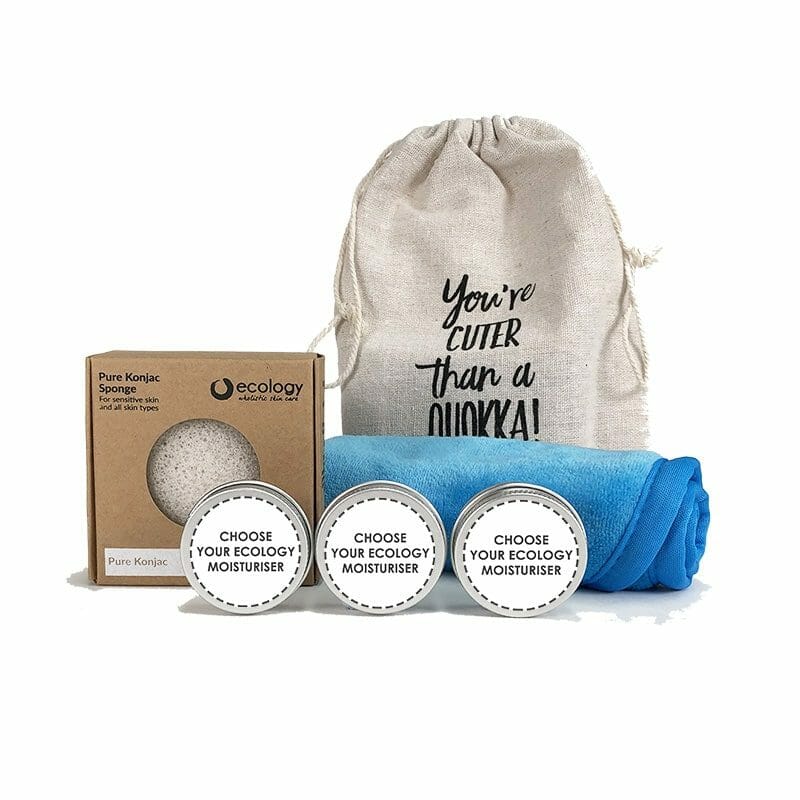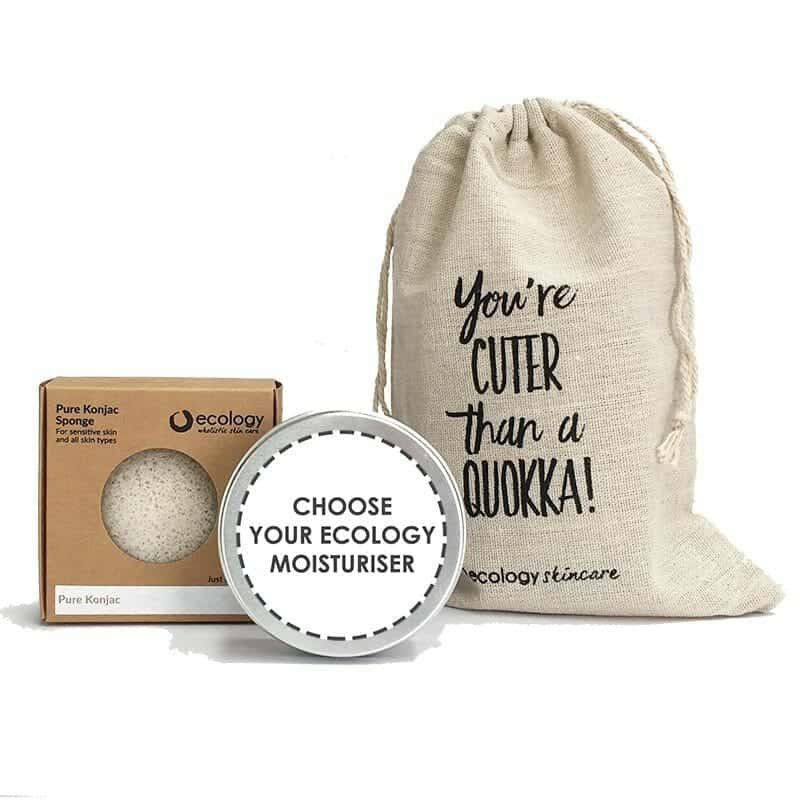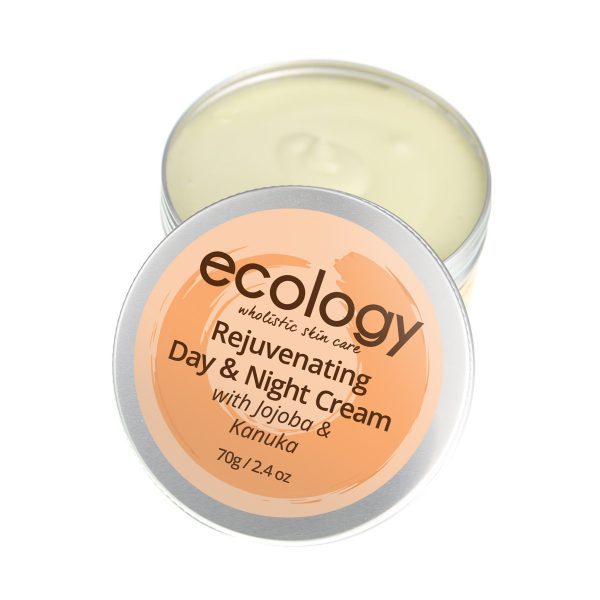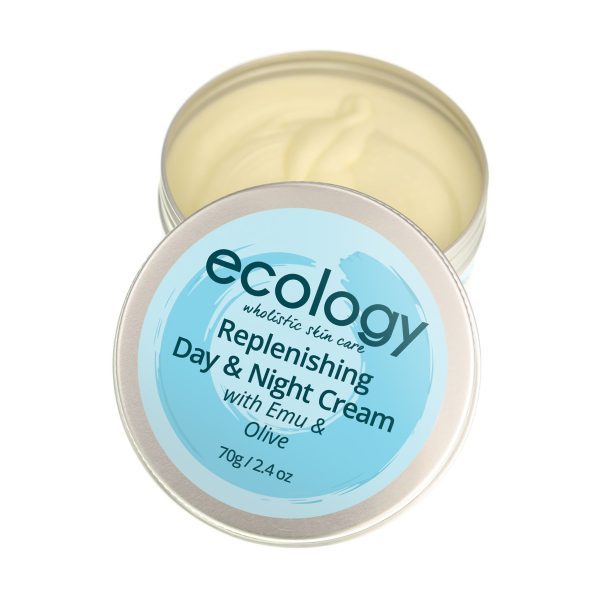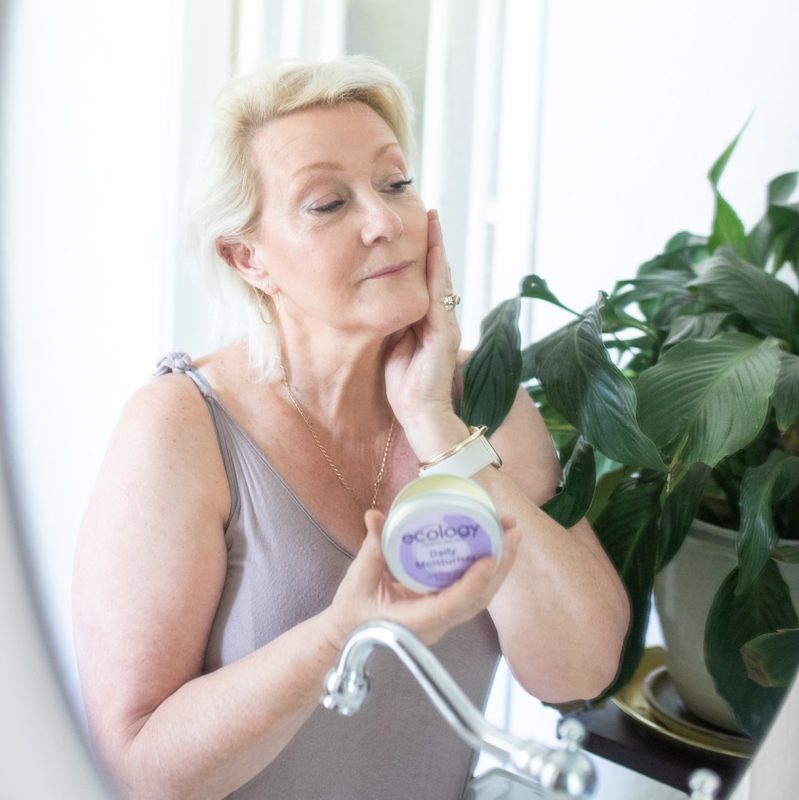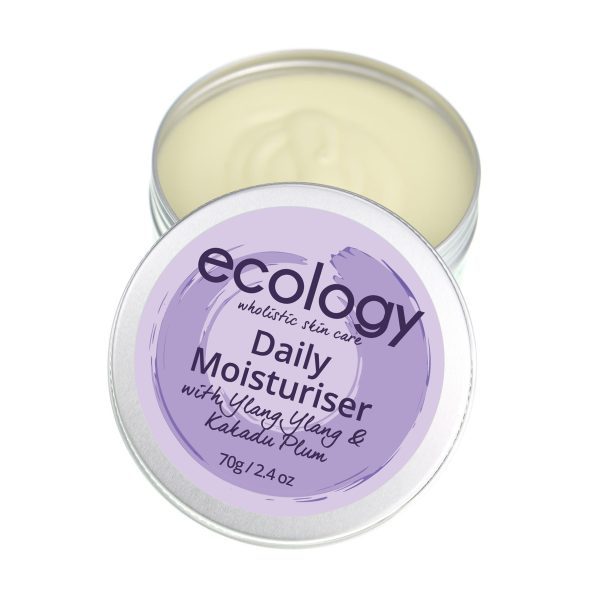Dry Skin, Natural Skincare
The Ultimate Guide to Nourishing Dry Skin with Natural Skincare
The funny thing is, once you clean up your diet…
You start looking at what other aspects of your life you can clean up…
For me, I realised my skincare was a biggie.
If I’m going to the trouble to source really good, high quality paleo food …why would I then want to wash, spray or rub the largest organ in my body (my skin) with chemical laden skincare products?
But it can be quite confusing, working out which ingredients to avoid and finding the right products for your skin. Especially when your skin’s dry, itchy, scaly or flaky.
You might find yourself just using baking soda (please don’t do that!) and coconut oil on your skin (there are far better alternatives to coconut oil, as you’ll find out)
Which is why we put together this ultimate guide.
To help you nourish dry skin from the outside in with products that fit with your ethos. And to nourish your skin from within with paleo-friendly foods and self care practices.
But first…
DID YOU KNOW THERE ARE 2 TYPES OF DRY SKIN?
Dry skin can be either oil-dry or water-dry (it can also be both)…
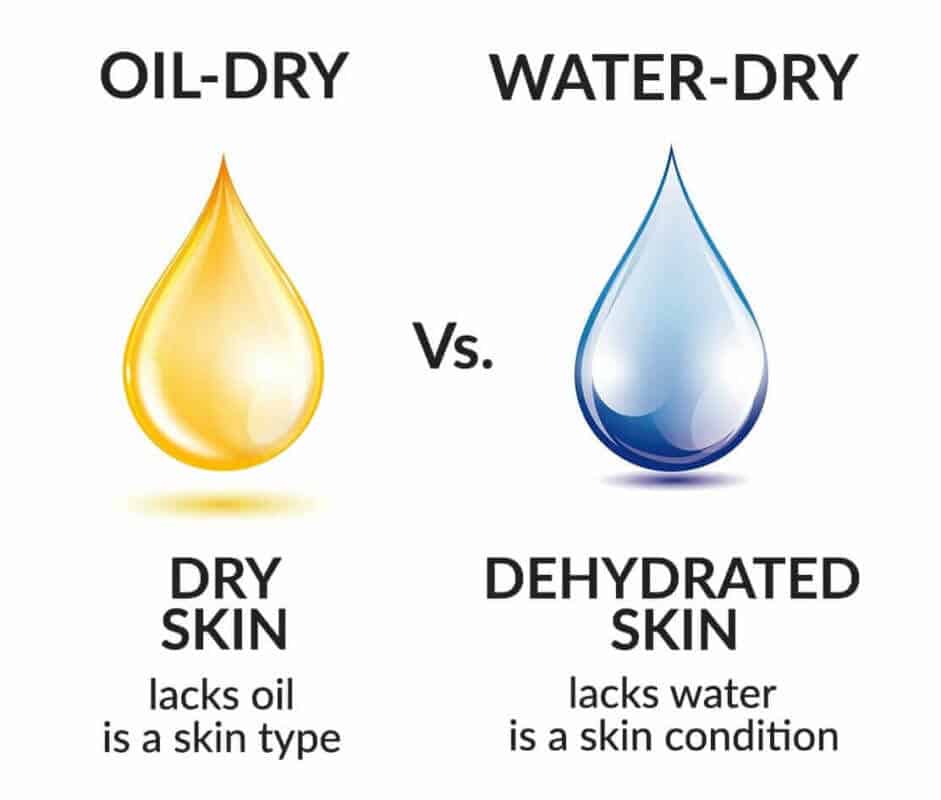
What is oil-dry skin?
Oil-dry skin is lacking oil.
You need protective oils to prevent moisture loss from skin.
It’s our pores that determine our skin type. When you look at skin that’s oil-dry you can hardly see the pores on the surface of the skin, which is typical of the dry skin type.
And barely visible pores are barely producing any protective oils. Definitely not enough oil to prevent moisture loss.
As we get older our skin naturally produces less of the oils that keep it nice and soft and supple.
Without the protection from those oils, we begin to lose moisture at a higher rate from the top layers of our skin. Which can leave skin looking and feeling dry, rough and even scaly, flaky and itchy.
What is water-dry skin?
Water-dry skin is lacking water.
It’s also known as dehydrated skin and is a condition that can occur with any skin type (though it’s more common in dry or ageing skin)
Dehydrated skin has less moisture in the surface cells, which can cause skin to look “crinkly” like elephant skin.
Skin can feel tight, look dull and each individual cell looks more like a raisin than a grape.
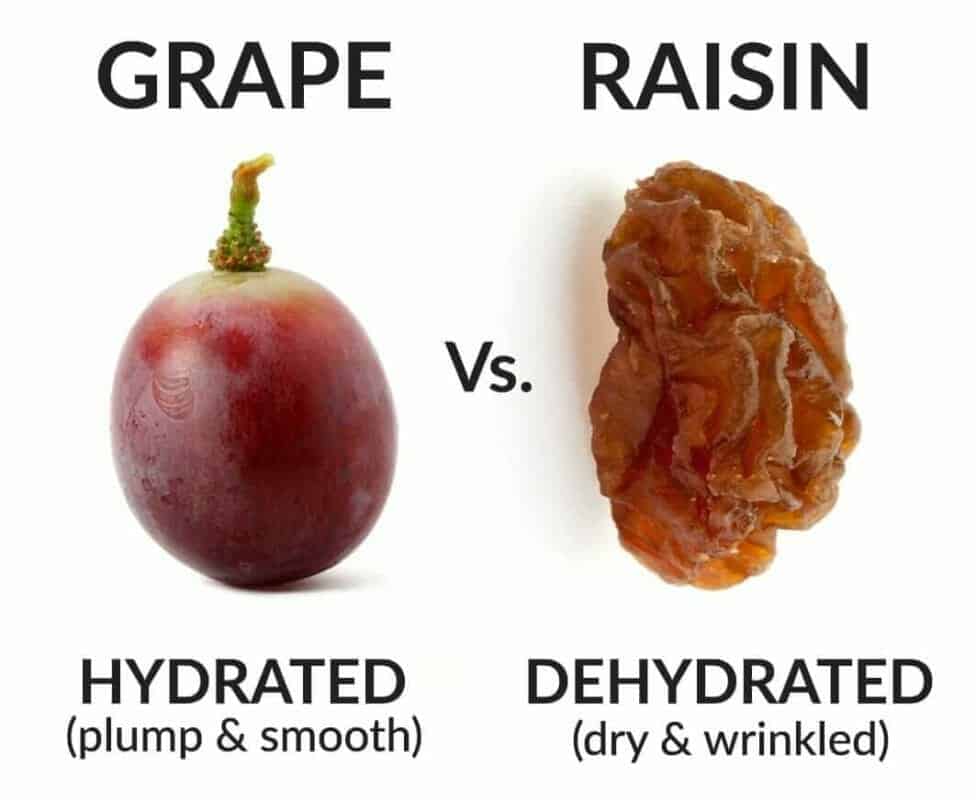
Fine lines and wrinkles look deeper and more pronounced, so dehydration can definitely make skin look older than it should!
Environmental exposure to sun, wind, cold air and over cleansing with products that strip away skin’s natural skin oils can make dehydrated skin worse. Especially if these exposures also strip away the protective lipids that sit in between your skin cells, forming your skin’s barrier function.
This means dehydrated skin is often worse in the winter months.
Both types of dry skin (oil-dry and water-dry) are caused by water or moisture escaping from the top layers of the skin
..and both types of dry skin can be helped by supporting skin’s natural barrier function and replacing skin’s natural oils.
Before we get to that, let’s take a look at what else can cause dry skin…
WHAT CAUSES DRY SKIN?
WHAT CAUSES DRY SKIN?
How dry or oily your skin is, is determined by your skin’s pores and how much oil your pores are producing.
Factors that can affect oil production and how well your skin retains moisture include:

- Genetics: This determines your pore distribution
- Hormones and hormonal fluctuations: Around menopause, estrogen levels drop and women often notice dry, itchy skin. Alternatively, some women can notice oilier skin and adult acne around menopause and pregnancy because of changes to the ratio of testosterone and estrogen in the body
- Age: As we get older our cell renewal cycle slows down, as does the production of skin’s protective oils and lipids
- Chronic conditions: Like thyroid conditions and diabetes can cause dry skin or make dry skin worse
- Medications: Some medications can affect our hormones and oil production
- Season or weather: Skin loses moisture more easily when exposed to the elements – low humidity, cold or dry air, wind, sun
- Skincare regime: Cleansing too often or cleansing with hot water can strip skin of protective oils. Not moisturising or choosing an inadequate moisturiser can also contribute to water loss
- Skincare products: Using products that contain ingredients like SLS, alcohol and water can strip away protective oils or be drying to skin
- Diet: Particularly an unbalanced diet high in processed foods and low in natural fats. Your skin needs proper building blocks to create plump, healthy “grape-like” skin cells that retain moisture.
HOW DO YOU KNOW IF YOU HAVE DRY SKIN?
HOW DO YOU KNOW IF YOU HAVE DRY SKIN?
How does your skin feel after cleansing? Or after you get out of the shower?
How many times a day do you feel the need to moisturise?
How large are your pores? Can you see them or are they barely visible?
If your skin’s a little tight after cleansing and seems to soak up moisturiser like it was never there, returning fairly quickly to the appearance of a dried out desert pan…
or if you can hardly see your pores…
Then it’s likely you have dry skin.
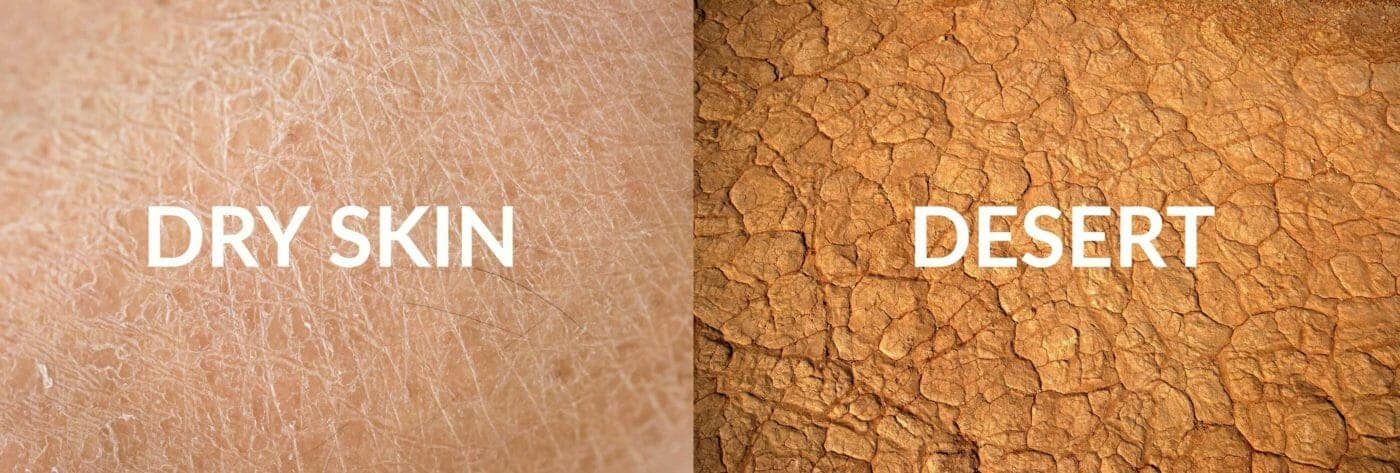
So how do you know if your skin is dry or IF IT’S just dehydrated?
Does your skin look “dull?”
Can you see very small “crinkly” looking fine lines when you pinch your skin?
Or do you have small “crinkly” looking fine lines under or around your eyes?
(It might look a little like elephant skin)
If you do, then it’s quite likely your skin is dehydrated.
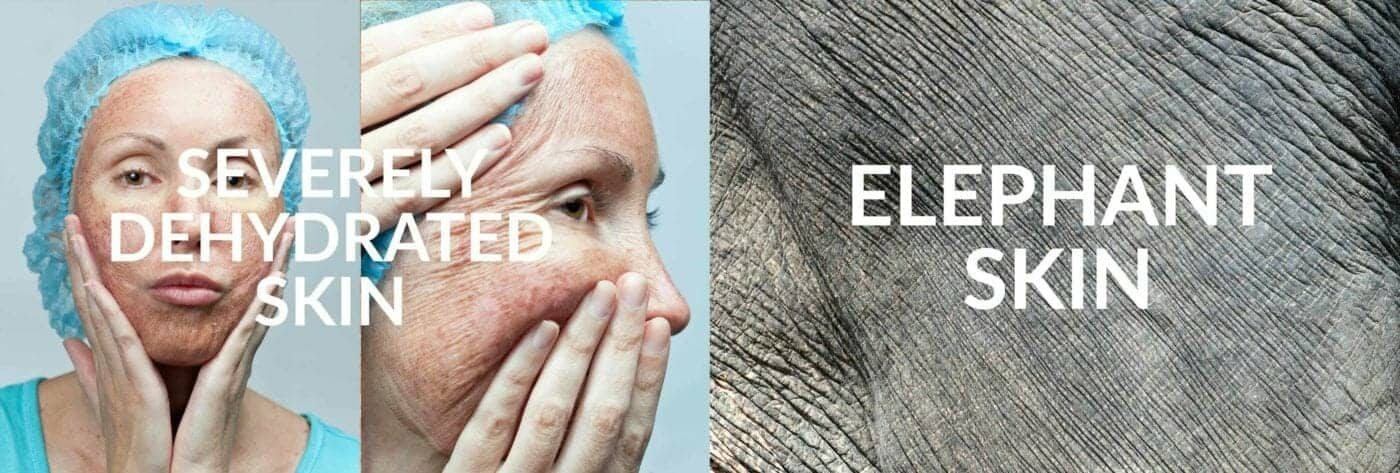
SKIN CONDITIONS ASSOCIATED WITH DRY SKIN
Dry skin is more likely to be:
- Dehydrated: Due to a lack of protective oils and lipids
- Red and sensitive: Also due to a lack of protective oils and lipids. This lack can lead to skin damage and “gaps” in skin’s protective barrier function. These gaps allow allergens and irritants into skin, causing redness, skin sensitivity and inflammation
Skin issues like dermatitis, eczema and psoriasis are also more often associated with dry, itchy and flaky skin.
All of which can be super frustrating when you’re trying to work out which skincare products will suit you!
When we surveyed our customers, we could see the 2 types of skincare that caused the most issues for women were:
- Supermarket brands or big brand skincare products
This is because these products often contain a long list of processed chemicals as well as fragrances or “parfum”, which can be drying or irritating for dry skin. Especially when barrier function is already damaged - Anti-ageing products
Big brand skincare products typically have a long list of different anti-ageing actives in them. And some active ingredients can be quite irritating to dry and sensitive skin, like AHA’s and BHA’s
So how can you use paleo principles to help you choose the right skincare for your skin?
HOW TO CHOOSE THE RIGHT SKINCARE PRODUCTS FOR DRY SKIN
HOW TO CHOOSE THE RIGHT SKINCARE PRODUCTS FOR DRY SKIN
There’s more demand now than ever before for natural skincare products.
Big brands are reformulating and marketing messages are changing.
So in some ways it’s easier to find natural skincare options for dry skin …and in some ways it’s harder.
There are so many ingredients in big brand skincare products and so many claims to “natural”.
You can easily wind up getting scared and just using baking soda (please don’t do that!) and coconut oil on your skin instead (there are far better alternatives to coconut oil as you’ll find out below)
It can be even harder to find the right skin care products if you have both dry and sensitive skin, like me.
I really struggled to find skincare products that met my personal standards and didn’t irritate my super sensitive skin, which is why I spent 12 months researching and developing our first Ecology Skincare natural moisturisers.
So when choosing skincare, put your paleo hat on and use the same principles you do when you’re choosing food…

1. Check the labels and do your research – the way you would with food
Do your research on the skincare company, their products and the ingredients.
There’s so much info available online now. Check out their website, their ethics and philosophies, their ingredient descriptions, and their product reviews.
By scrutinising your skincare products, you can reduce the amount of chemicals you expose yourself to on a daily basis and reduce those ingredients most likely to make dry skin worse.
And when you’re looking at an ingredient list…

2. A shorter ingredient list is better
When we look at the back of a packet, box or tin of food we like to see a nice short ingredient list.
The same goes for your skincare. Keep in mind though, that some of the ingredients contribute to the function of the product, some to the feel of it and some to the fragrance.
When we strip products down too much, we can end up compromising on the way the product feels or performs.
Check the ingredients on the label against the Chemical Maze app and the EWG Skin Deep database …and choose how “natural” you want to go. Which ingredients will be a no-go for you?
(I’ll share some ingredients you should definitely avoid below)
3. Look more closely at the top ⅓ of the ingredient list
As with food, ingredients in skincare products are listed in order of highest quantity to lowest quantity.
In her book “Healthy Home, Healthy Family”, Nicole Biljsma reports that the “first third of ingredients on the label account for up to 95% of the contents of the product. The second third of the chemicals represent 5-8% and the last third account for 1-3%”
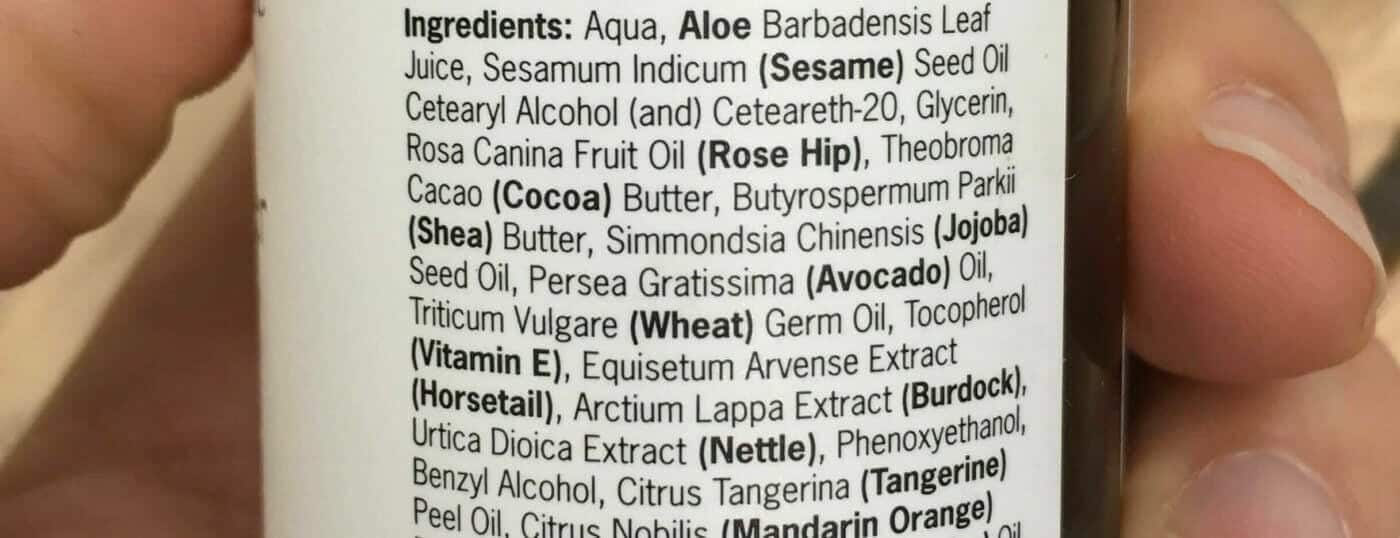
4. Look for natural ingredients with names you recognise
And like food, go for organic where possible.
But be aware that “natural” can be a fairly loose term in the skincare industry.
When you see the words “derived from [a natural substance]” or “plant derived” on the label, this usually indicates ingredient has been processed, refined or interfered with in some way.
This is what’s known as “green washing” in the skincare industry.
For example sodium lauryl sulphate (derived from coconut) is made by adding sulphuric acid to coconut… it has a nice green halo, but it’s not fantastic when you think about it!
Some labels might have the common names you recognise, as well as big words or long names (maybe in bold or brackets). For example, Simmondsia Chinensis (Jojoba) Oil.
Don’t worry, the big words are just the botanical, chemical or INCI names for these ingredients.
And look for products that contain essential oils and plant extracts over the words fragrance or “parfum”
(you’ll find out why below)
To find out more, watch: “How to choose good personal care products”
Ok, so that gives you a good grounding, but…
WHICH INGREDIENTS SHOULD YOU AVOID FOR DRY SKIN?
WHICH INGREDIENTS SHOULD YOU AVOID FOR DRY SKIN?
These ingredients are particularly irritating for dry skin, but there are also other reasons to avoid them:
1. Sodium Lauryl Sulphate (SLS) or coco betaine
SLS is a detergent found in facial cleansers, body washes, shower gels, shampoos and conditioners.
It’s very drying to skin. SLS strips away skin’s protective oils causing irritation and weakening skin’s barrier function.
SLS is also used as a skin irritation yardstick in scientific studies, to measure the irritancy of other ingredients, so it’s pretty irritating to skin.
Alternative: Look for milder, plant based detergents like yucca extract and decyl glucoside. These are less drying for skin. Or better yet, skip the cleanser and cleanse with an Ecology Konjac Sponge or a microfibre cloth instead.
2. Fragrance or “parfum”
The words fragrance or parfum are a catch-all for a whole big group of 1,000’s of undisclosed chemicals that include phthalates and other synthetics that can cause skin irritation, sensitisation, allergies, skin reactions, asthma, interfere with hormones and potentially cause cancer.
…and these banner terms of fragrance or parfum turn up on a lot of skincare labels!
So fragrance and parfum are public enemy #1 for dry skin!
Alternative: Essential oils and plant extracts can be a better alternative to synthetic fragrances. But care still needs to be taken if you have dry skin that’s sensitive.
Just because it’s natural doesn’t automatically mean it will be fine for you.
In a formulation, the lower the concentration of an essential oil, the better it is for dry skin. This is why we formulated our original Ecology Creams with minimal essential oils.
So go for products that have a low aroma.
Take extra care with citrus-based essential oils like lemon, lime, orange, mandarin and bergamot. As well as jasmine, rose, geranium and sandalwood.
3. Cocomide DEA, MEA or TEA or lauramide DEA, MEA or TEA
These ingredients help to create a foam or lather and adjust the pH of a product.
They’re also skin, eye and lung irritants. They may cause allergic reactions and have been linked to cancer and hormone disruption.
4. Mineral oils, petrolatum OR paraffin
These are petroleum derived ingredients that are found in moisturisers, eczema products, lip gloss, lip balm and makeup.
They form a barrier on skin and interfere with skin’s natural functioning. They may also be contaminated with hydrocarbons that are potentially carcinogenic.
Alternative: Look for products that contain ingredients that mimic skin’s natural oils and support skin’s natural functioning without ‘sealing’ skin – like grass fed tallow, emu oil, lanolin, cocoa butter and shea butter
If you need something heavier that will form more of a barrier on your skin, look for ingredients like beeswax and other natural waxes
5. Alcohol and other astringents like witch hazel that can dry skin
SD alcohol, ethanol, isopropyl alcohol and witch hazel are often found in toners. These ingredients will strip your skin of both water and oil.
Alternative: If you’re going to use a toner, look for a soothing, hydrating toner that is alcohol-free
To find out more, watch: “Which processed chemicals to avoid in your body wash and why”
…and then there are these 2 ingredients that are very benign. But they can pose some issues for dry skin…
6. Water
Moisturisers and lotions containing water are less likely to lock in moisture and more likely to leave skin feeling dry.
When water is the first ingredient in a product, it generally makes up 50% – 80% of the product.
At this concentration, there’ll be less skin nourishing components in the moisturiser (there’s only 20-50% room left in the formulation for these other ingredients.)
Which means you’ll have less protection from moisture loss and dry skin.
Not only that, the water in the moisturiser itself can quickly evaporate from skin. Which contributes to skin feeling drier than before.
The other issue with water relates to the 2 different types of ingredients needed to stabilise a formulation that contains both water and oils. Emulsifiers and preservatives.
These two types of ingredients can be both drying and irritating to skin, especially to dry skin that is sensitive.
Alternative: Go for rich, creamy moisturisers containing ingredients like cholesterol, saturated fatty acids, tallow, emu oil, jojoba, olive oil and other omega rich oils and plant based butters that closely mimic skin’s own naturally produced oils. These will help to replenish and nourish dry skin. They also help to repair the barrier function by patching up any gaps between your skin cells and supporting your skin’s protective barrier function.
Other ingredients to look for include: jojoba, olive oil and other omega rich oils, plant based butters like shea and cocoa and antioxidants. Why not try one of our Ecology moisturisers?
7. Coconut oil
I know, I know… coconut oil is the darling of the paleo world.
Coconut oil is great for many things. Yes, it has a high concentration of lauric acid, but it has no cholesterol, omega 3’s or fat soluble vitamins and very little oleic acid in it.
The fatty acid composition of coconut oil means that it doesn’t mimic our skins natural oils …so it can just sit on top of skin, feeling greasy and staining clothing or transferring to items you brush up against (you know what I’m talking about)
In addition to this, coconut oil is incomplete in terms of the nutrients needed for dry skin. Which means it doesn’t give dry skin the nourishment it needs.
Alternative: You’re better to look for rich, creamy moisturisers containing ingredients like cholesterol, tallow, jojoba, olive oil and other omega rich oils and plant based butters that closely mimic skin’s own naturally produced oils. These will help to replenish and nourish dry skin. Try one of our Ecology moisturisers.
Alrighty, so what should you be choosing instead in the way of ingredients for dry skin?
WHAT ARE THE BEST NATURAL INGREDIENTS FOR DRY SKIN?
WHAT ARE THE BEST NATURAL INGREDIENTS FOR DRY SKIN?
My overarching guiding principles when it comes to skincare are:

Simple is good

Less is more, and

Natural is best
We can also take natural one step further, by thinking about the makeup of our skin itself.
Fats (or lipids) make up around 50% of our cell membranes (including our skin cells)
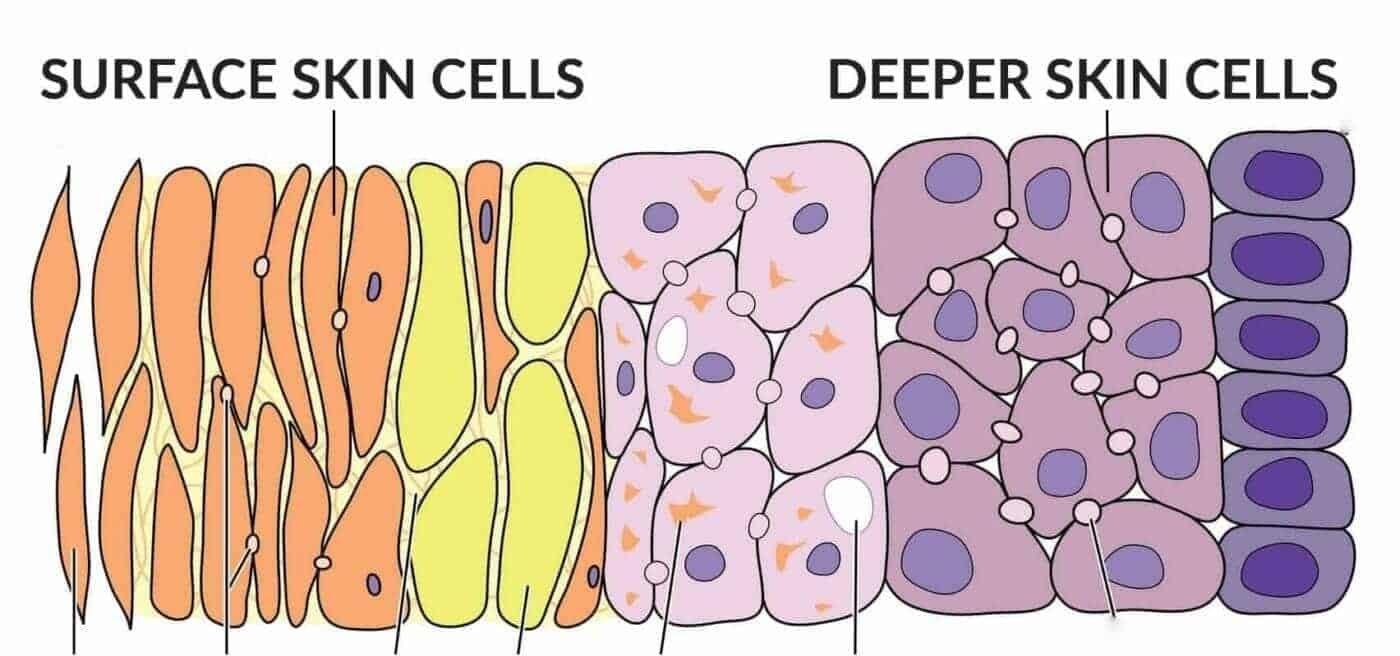
The composition of those fats or lipids in our cell membranes and in between our skin cells (the glue or mortar) is around:
- 45-50% ceramides
- 25% cholesterol, and
- 10-15% free fatty acids
The composition of the natural skin oils on the surface of our skin (our sebum) is around:
- 30-50% triglycerides
- 25% wax esters
- 15-30% free fatty acids
- 10-15% squalene
- 4-8% cholesterol
So the most helpful ingredients for dry skin, will contain these components to help replenish skin that’s lacking in oils and support skin’s natural functioning.
For example, ethically sourced, high quality grass-fed tallow really closely mimics our skin’s natural lipids.
And unlike most other natural ingredients, it contains cholesterol and fat soluble vitamins A, D, E and K.
That being said… there are SO MANY ingredients that are helpful for dry skin.
So how do you choose the best ones?
It depends on a few things.
- Function. What do you need the skincare product to do? It needs to contain the right ingredients to perform that function
- Processing. How far from it’s natural state is the ingredient?
Moisturisers can be a particular struggle for dry skin, so we’ll look more closely at ingredients commonly found in moisturisers.
CATEGORIES OF INGREDIENTS FOR DRY SKIN
It can be useful to look at ingredients in terms of categories (especially if you have sensitive skin)
We’re all a little different… and one ingredient in a category might be fantastic for me, but might not work for you (or it might irritate the heck out of your skin)
So as long as your moisturiser contains some emollient ingredients from the replenishing category, for example, you’ll be doing the best you can for dry skin
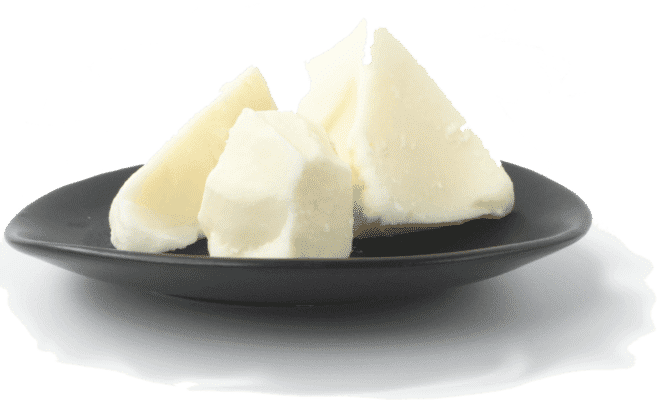
1. REPLENISHING INGREDIENTS FOR DRY SKIN
This category contains what are known as emollient and lipid ingredients.
These ingredients are (usually) oils or fats that replenish the top surface layers of skin. Helping to plug any gaps in skin’s barrier function.
These replenishing ingredients soften skin and protect against moisture loss, helping skin cells stay plump and hydrated (preventing dehydration and crinkly elephant skin)
Paleo-friendly ingredients in this category include:
- Grass-fed tallow
- Emu oil
- Lanolin
- Butters, like shea and cocoa butter
- Olive oil
- Jojoba oil

2. HYDRATING INGREDIENTS FOR DRY SKIN
This category contains what are known as humectant ingredients.
These ingredients attract water and bind it in the surface layers of the skin.
Which is particularly helpful for dehydrated skin.
Paleo-friendly ingredients in this category include:
- Honey
- Hyaluronic acid
- Aloe vera
- Glycerin
- Seaweed and algae
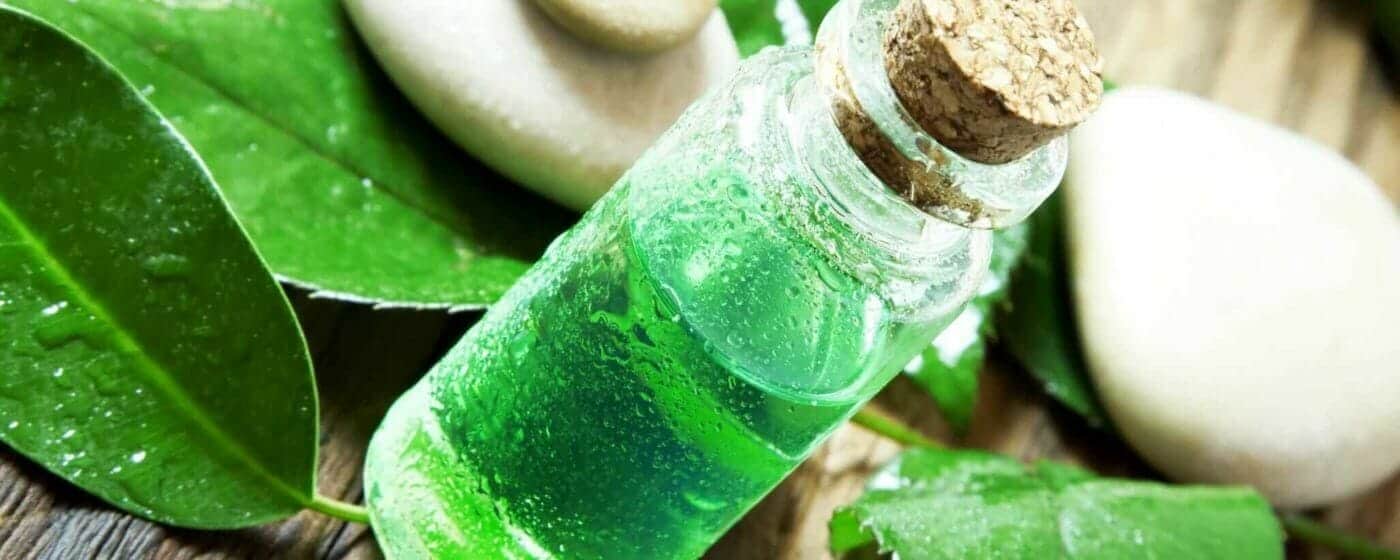
3. ANTIOXIDANTS FOR DRY SKIN
Antioxidants are helpful for all skin types.
But they’re especially helpful for skin that’s dry and damaged due to sun exposure and other environmental stresses.
Antioxidants often come as components of ingredients in products. For example grass-fed tallow contains Vitamins A and E, powerful antioxidants that protect cells from oxidation and premature aging.
Look out mentions on the product label or in the marketing for:
HOW TO CARE FOR DRY SKIN NATURALLY
HOW TO CARE FOR DRY SKIN NATURALLY
1. CLEANSE WITH LUKEWARM WATER AND HAVE LUKEWARM SHOWERS
Washing or cleansing with water that’s too hot can strip away your skin’s protective skin oils.
And depending on how dry or irritated your skin is, it can also remove some of the lipids that sit in between the skin cells in the top layer of your skin. Which can leave skin feeling tight and dry.
So cleanse gently, only once or twice a day, with lukewarm water.
I tend to cleanse once in the evening to remove any dirt and pollution from the day and if I’m wearing make-up I’ll use a microfibre makeup removal cloth. Then in the morning, I simply splash lukewarm water on my face to freshen my skin.
2. CONSIDER A CHLORINE FILTER FOR THE SHOWER
The chlorine in water can be irritating for people with dry skin, eczema or dermatitis.
“Chlorine is a strong skin and lung irritant” says building biologist Nicole Bijlsma, “which is why people with eczema are often worse after a shower or bath”
3. USE GENTLE CLEANSERS
Avoid cleansers that contain, harsh detergents like sodium laurel sulphate or coco betaine.
You’ll know if a product contains harsh detergents by it’s “soapy” feel and ability to form lots of suds.
Choose cleansers with gentle detergents, like yucca extract or decyl glucoside.
You can also try oil cleansing or better yet, try one of our Konjac Sponges.
These vegetable fibre sponges are super soft and will help your skin retain it’s natural oils and moisture levels. Just add water, no cleanser is needed.
Always remove makeup at night time. A super soft microfibre cloth works well for dry skin. Jojoba and coconut oil may also be helpful for makeup removal (this is one place where you can use coconut oil!)
4. MOISTURISE STRAIGHT AFTER CLEANSING OR SHOWERING
Wet skin dries out really quickly as the moisture evaporates from the surface of your skin.
So apply your moisturiser while your skin is still damp. This will help to seal in moisture, protect your skin from environmental stresses and prevent dehydrated skin from drying further.
5. CHOOSE A RICH MOISTURISER
Support your skin’s barrier function with moisturisers containing natural fats and oils like grass-fed tallow and emu oil.
These ingredients contain lipids found naturally in the skin and skin oils (like saturated fatty acids and cholesterol.) Which will help to replace any missing components in your skin’s barrier function and prevent moisture loss
6. BE CAREFUL WITH EXFOLIATION
Very gentle, mild exfoliation a couple of times a week can be helpful to remove dead and dry skin cells.
This will encourage the production of fresh, new skin cells and lipids to shore up skin’s protective barrier.
It will also help your moisturiser penetrate to where it can be more effective.
Be very careful about overdoing it with AHA’s and BHA’s though.
Look to gentle natural ingredients like oatmeal, coffee and papaya.
Or why not try a DIY honey and yoghurt mask? Honey is a great humectant ingredient that helps to attract and bind water in the top layer of skin.
(Humectants like honey and hyaluronic acid are particularly helpful for dehydrated skin)
7. CHOOSE MAKEUP THAT IS SUITED TO DRY SKIN
Avoid matte or powdered makeup and brush application, as this can wind up looking patchy and cakey on dry skin.
Instead, go for cream or oil based foundations and apply with a sponge.
Look for more natural skincare brands like: RMS Beauty, Ere Perez, Luk Beautifood, 100% Pure and Primal Life Organics.
8. AVOID BAKING SODA & LEMON JUICE ON DRY SKIN
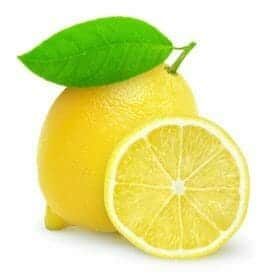 Using these 2 ingredients is common in the paleo, DIY or natural skincare space.
Using these 2 ingredients is common in the paleo, DIY or natural skincare space.
Please be careful with these ingredients!
Baking soda is quite alkaline (pH 8.3) compared to our skin’s normal pH (4.5-5.5) and it can be quite abrasive, causing micro-tears in skin. And lemon juice is quite acidic (pH 2-3).
If you’ve lost lipids in your skin’s protective barrier function (which is the case for a lot of people with dry skin), these ingredients can penetrate your skin and cause irritation.
9. CHANGE IT UP AS YOUR SKIN’S NEEDS CHANGE
As you saw above, your skin’s level of oil production can change with the seasons, your environment, your hormonal fluctuations (pregnancy, menopause) and even your diet.
Don’t get locked into the same skincare products all year round, or for years and years.
You might need something lighter in the summertime and richer in the winter time.
Or you might need something with more antioxidants and is richer and more nourishing after being out in the sun. You might also need richer products as you get older and cell renewal and oil production slows.
So be flexible with your skincare.
WHAT SHOULD YOU EAT FOR HEALTHY, GLOWING SKIN?
WHAT SHOULD YOU EAT FOR HEALTHY, GLOWING SKIN?
The foods you eat most definitely affect your skin and your skin’s barrier function.
Remember…
- Your skin is the largest organ in your body, and
- You are what you eat …and more importantly, what you absorb!
If you’re eating a lot of processed, nutrient poor foods or if you’re lacking in certain nutrients …it doesn’t give your body much to work with because your skin’s at the end of the line in priority for nutrients in the body.
This can show up on your skin in the form of dry or dehydrated skin, skin issues and premature aging.
Eating anti-inflammatory whole foods like: vegetables, meat, fish, fruit, eggs and natural fats will help to ensure you’re getting the nutrients needed to build healthy, plump (grape-like) skin cells.
Which will help your skin function better to retain moisture and protect you from environmental stresses.
Here are some good Paleo staples that will take you a long way towards healthy, well nourished skin…
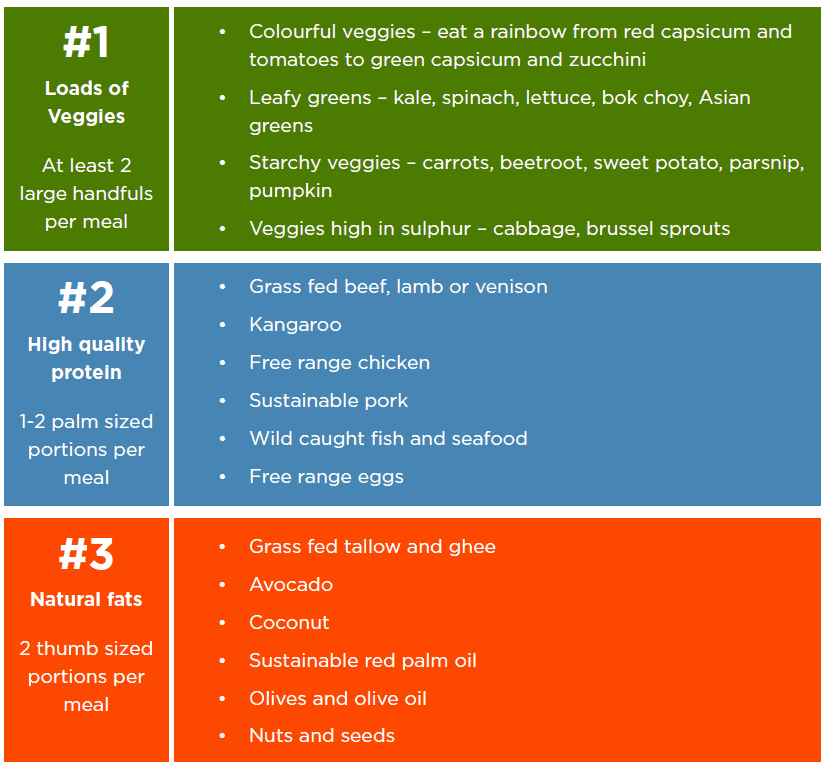
WHAT TO DO NOW...
WHAT TO DO NOW...
Choosing the right skincare products for your skin, having a good skincare routine and nourishing your skin from within with good food and self care, will all help to improve your skin’s ability to retain moisture.
If you follow the suggestions in this Ultimate Guide, your skin will be looking super soft and feeling silky smooth in no time!
So your next steps are to:
- Take a look at the skincare products you’re using currently and check to see if they contain any ingredients best avoided for dry skin
- Research and find products containing replenishing and hydrating ingredients for dry skin. Include a google search for DIY masks and treatments including these ingredients
- Consider our Ecology Skincare range for dry skin. Our Rejuvenating Cream and Replenishing Cream are ultra rich and perfect for nourishing dry skin. Our Pete Evans Daily Moisturisers are lighter but also helpful for smoothing the look of fine lines.
TRY ECOLOGY SKINCARE TODAY!
- FREE SHIPPING -
Simply select one of the options below and use the Promo Code: STARTER
at checkout to get free shipping on your Starter Pack
Ecology Starter Pack #1 - For Dry Skin
$49 $51
3 x 10mL Ecology Moisturisers of your choice +
a Facial Konjac Sponge + a Makeup Removal Cloth
WITH FREE SHIPPING!
(normally $10 - total saving $12)
When you use Promo Code: STARTER
at checkout*
*FREE SHIPPING: Use Promo code: STARTER at checkout. New customers only. Valid for one use on an Ecology Starter Pack. Starter Packs are sent via eParcel
Ecology Starter Pack #2 - For Dry Skin
$49 - $56 $51 - $58
100mL Ecology Moisturiser of your choice +
a Facial Konjac Sponge
WITH FREE SHIPPING!
(normally $10 - total saving $12)
When you use Promo Code: STARTER
at checkout*
*FREE SHIPPING: Use Promo code: STARTER at checkout. New customers only. Valid for one use on an Ecology Starter Pack. Starter Packs are sent via eParcel
And remember, having the right skincare regime for dry skin will be just the starting place for some of us.
What we see happening with our skin is often a reflection of what’s going on on the inside, with our inner health and happiness. Yes, even with dry skin!
Remember that your skin is the largest organ in your body and it’s intimately connected with your gut health, your hormonal responses and your mental health.
So if you have dry skin that’s also sensitive or skin issues like dermatitis eczema and psoriasis, it’s likely that the suggestions we’ve made will help your skin look better and feel more comfortable.
But for total resolution of any skin issues, you may need to look to further dietary changes and stress management practices.
I recommend that you seek the help of trusted healthcare professionals to diagnose and to advise you with these diet and lifestyle measures.
An ultra-rich, natural moisturiser for dry and damaged skin
This product has multiple variants. The options may be chosen on the product pageFor Sensitive Skin
An ultra-rich, natural moisturiser for dry and sensitive skin and for skin prone to redness and dry skin conditions **Ingredient Change - from 6th May we've switched our antioxidant in this moisturiser from Rosemary Leaf Extract to a natural Tocopherol (Vitamin E), see ingredients for update**
This product has multiple variants. The options may be chosen on the product pageFor Mature Skin
A lighter natural moisturiser for all skin types, mature skin and skin prone to breakouts
This product has multiple variants. The options may be chosen on the product page

